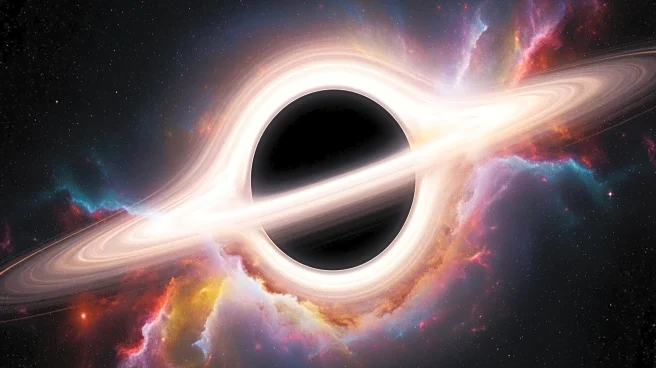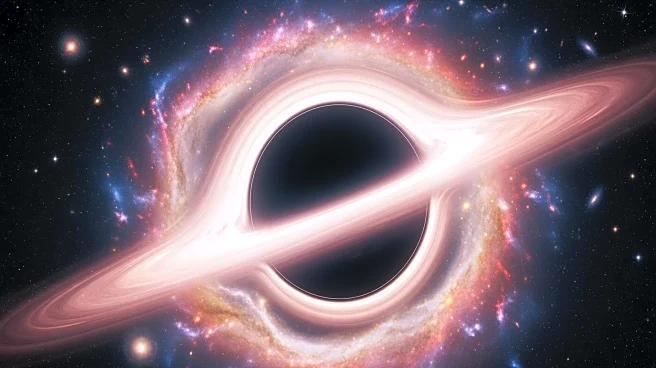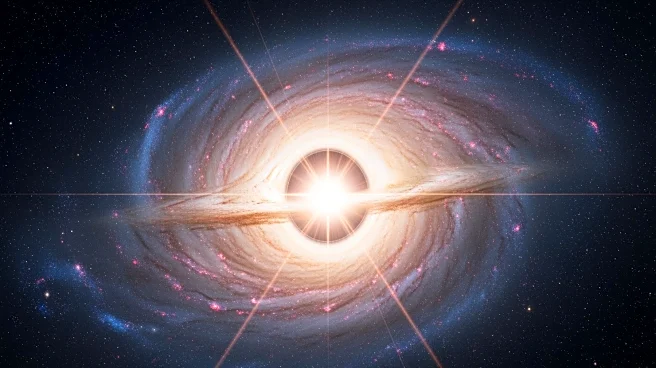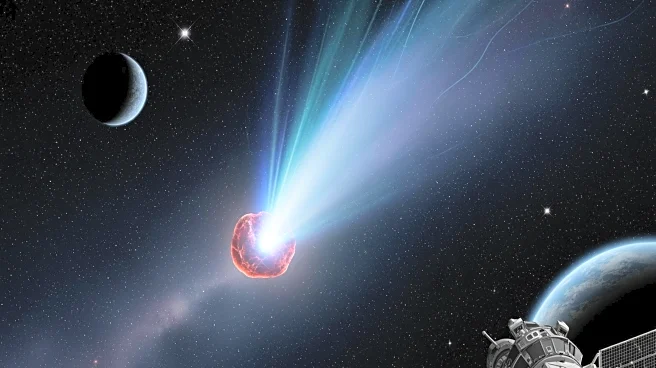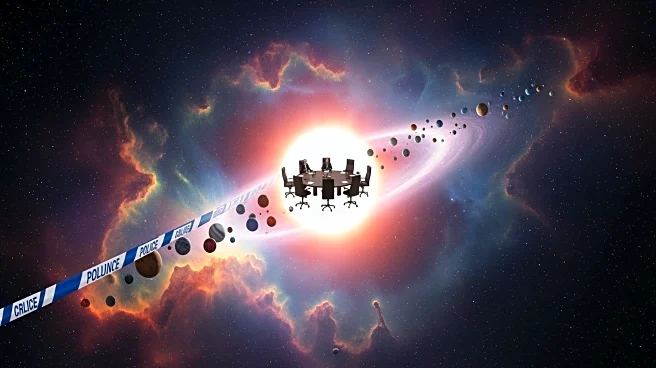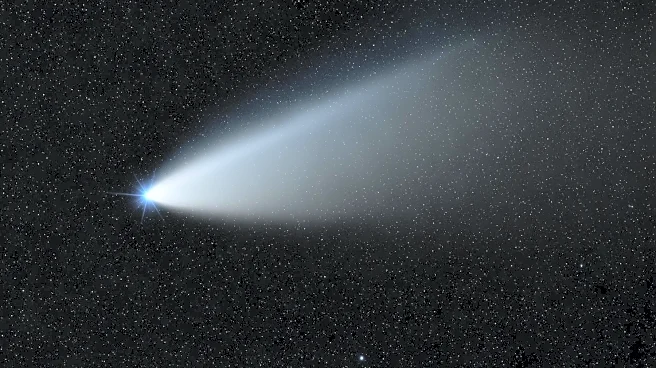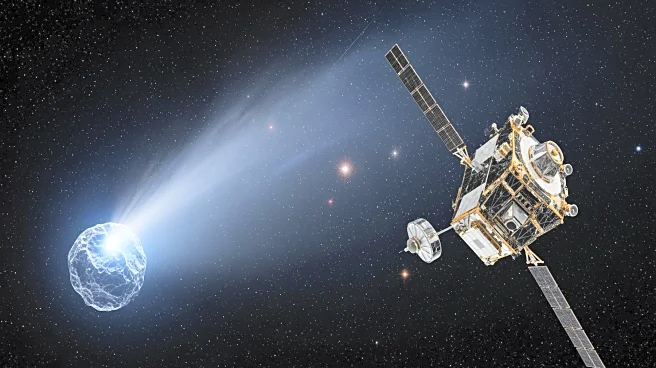What's Happening?
Astronomers have reported the observation of the most massive and distant black hole flare ever recorded. This event was detected by researchers at the Zwicky Transient Facility in 2018 and involves a supermassive
black hole, categorized under active galactic nuclei (AGN), consuming a supermassive star. The black hole, estimated to be 500 million times the mass of the sun, emitted light equivalent to 10 trillion suns at its peak. Located 10 billion light-years away, the flare is being observed at a slowed pace due to the time dilation effects of massive gravitational objects. This discovery provides significant insights into the behavior of black holes and their interactions with surrounding matter.
Why It's Important?
The observation of such a massive black hole flare is crucial for understanding the dynamics of black holes and their role in the universe. This event offers a rare opportunity to study the processes involved when a black hole consumes a star, contributing to the broader knowledge of cosmic phenomena. The findings could have implications for theoretical models of black hole behavior and the lifecycle of stars. Additionally, this discovery highlights the capabilities of modern astronomical facilities in detecting and analyzing distant cosmic events, potentially leading to further advancements in space exploration and astrophysics.
What's Next?
Astronomers will continue to monitor the diminishing flare to gather more data and refine their understanding of black hole activity. This ongoing observation may reveal new details about the interaction between black holes and their surrounding environments. The scientific community is likely to conduct further studies to explore the implications of this event on existing theories of black hole mechanics and galactic evolution. As technology advances, future observations may uncover additional phenomena related to black holes, enhancing our comprehension of the universe.
Beyond the Headlines
This discovery also raises questions about the potential for similar events occurring closer to Earth and their possible effects on our galaxy. The study of black holes and their flares could lead to a deeper understanding of the fundamental forces governing the universe. Moreover, the ability to observe such distant events underscores the importance of international collaboration in space research, as well as the need for continued investment in astronomical technology and infrastructure.
